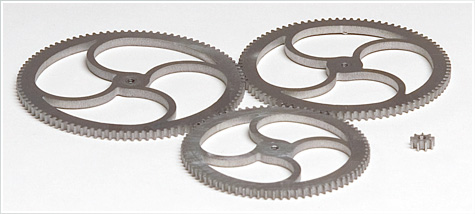
Aluminum Water Jet Cutting Services: Precision, Versatility & Cost-Effective Solutions
Aluminum stands as one of the most versatile and widely used metals across countless industries, from aerospace and automotive to electronics and architectural design. Its favorable strength-to-weight ratio, corrosion resistance, and machinability make it indispensable. However, cutting aluminum, especially intricate shapes or thicker plates, presents unique challenges. Thermal processes like laser or plasma cutting can induce heat-affected zones (HAZ), altering material properties and causing warping or discoloration. This is where aluminum water jet cutting services shine, offering a superior, cold-cutting alternative. This article delves deep into why aluminum water jet cutting services are often the optimal choice for precision fabrication.
1. The Fundamentals: How Water Jet Cutting Works on Aluminum
At its core, water jet cutting is an incredibly versatile machining process that utilizes a high-pressure stream of water, often mixed with an abrasive garnet sand, to erode material. For aluminum water jet cutting services, this process unfolds with remarkable precision:
Ultra-High Pressure: Water is pressurized to levels exceeding 60,000 PSI (often reaching 90,000+ PSI) by an intensifier pump.
Focusing the Stream: This pressurized water is forced through a tiny gemstone orifice (typically diamond or sapphire), creating a coherent, supersonic stream.
Abrasive Introduction (For Metal Cutting): For cutting hard materials like aluminum, an abrasive material (usually garnet) is introduced into the water stream within a specialized mixing tube. The abrasive particles are accelerated by the water, transforming the stream into an incredibly powerful cutting tool.
The Cutting Action: This high-velocity mixture of water and abrasive strikes the aluminum surface with immense kinetic energy, mechanically eroding the material particle by particle. It’s a purely mechanical process, generating no heat in the workpiece.
CNC Precision: The cutting head is mounted on a sophisticated Computer Numerical Control (CNC) gantry system. This allows for incredibly precise movement following a digital CAD/CAM file, enabling the cutting of complex 2D shapes and profiles with tolerances typically within +/- 0.003″ to +/- 0.005″.
The cold-cutting nature is the defining characteristic of aluminum water jet cutting services, completely eliminating the thermal distortion, HAZ, and metallurgical changes associated with laser or plasma cutting.
2. Unmatched Precision and Complex Geometry Capabilities
Aluminum water jet cutting services excel in producing parts requiring high accuracy and intricate details:
Tight Tolerances: As mentioned, water jets consistently hold tight tolerances, crucial for parts requiring precise fit and assembly. This precision is maintained across varying aluminum thicknesses.
Intricate Details and Sharp Corners: Unlike some thermal processes that struggle with sharp internal corners or very fine features, a water jet can produce remarkably sharp corners and cut extremely complex geometries, including small holes and intricate patterns, without tool wear limitations affecting the cut path.
Near-Net Shape Cutting: Water jets produce a very narrow kerf (the width of material removed by the cut), typically ranging from 0.030″ to 0.050″ depending on the orifice/mixing tube size and material thickness. This minimizes material waste and allows for parts to be cut very close to their final dimensions.
No Burrs (Minimal Secondary Operations): The cutting action typically results in a smooth edge with minimal burring, especially compared to plasma cutting. This significantly reduces or often eliminates the need for secondary deburring operations, saving time and cost. Edge quality is generally excellent.
No Start Holes Required: Water jets can pierce aluminum directly, eliminating the need for pre-drilled start holes for internal cuts, simplifying the programming and setup process.
This precision makes aluminum water jet cutting services ideal for prototypes, intricate brackets, decorative panels, heat sinks with complex fin structures, and components requiring high dimensional accuracy.
3. Material Integrity Preservation: The Cold Cutting Advantage
This is arguably the most significant benefit offered by aluminum water jet cutting services:
Zero Heat-Affected Zone (HAZ): Since the cutting is purely mechanical and involves no heat input, there is absolutely no alteration to the metallurgical structure of the aluminum adjacent to the cut edge. The base material properties (hardness, temper, strength, corrosion resistance) remain completely unchanged.
No Thermal Distortion or Warping: Heat causes metal to expand and contract unevenly, leading to warping, especially in thin sheets or complex shapes. Water jet cutting eliminates this problem entirely, producing perfectly flat parts as designed.
No Hardened Edges or Micro-Cracking: Thermal processes can create hardened edges or microscopic cracks in aluminum, which can become failure points under stress or fatigue. Water jet cutting produces edges free from such thermal defects.
No Oxidation or Discoloration: Laser and plasma cutting can leave oxidized edges or heat tints (discoloration) on aluminum, requiring additional cleaning or finishing. Water jet cut edges are clean and free from oxidation caused by the cutting process itself.
Suitable for Heat-Sensitive Alloys: This makes aluminum water jet cutting services perfect for cutting heat-treatable alloys (like 6061-T6, 7075-T6) or clad aluminum where preserving the temper or cladding integrity is critical.
Preserving material integrity is essential for structural components, aerospace parts, and any application where the inherent properties of the aluminum must remain uncompromised.
4. Versatility in Handling Aluminum Grades, Thicknesses, and Finishes
Aluminum water jet cutting services offer remarkable flexibility:
All Grades and Alloys: Water jets cut virtually all aluminum alloys equally effectively, from soft 1000-series to high-strength 7000-series alloys. The process doesn’t discriminate based on alloy composition or hardness.
Extreme Thickness Range: Water jets can cut aluminum from thin foils (0.001″ / 0.025mm) up to very thick blocks (12″ / 300mm or even more with specialized equipment). This is a range unmatched by most laser cutters (which struggle with thick reflective aluminum) and significantly beyond practical plasma cutting capabilities while maintaining precision. Cutting thick aluminum (e.g., 4-8 inches) is a particular strength of water jet.
Pre-Finished Material: Because there’s no heat, water jet is the ideal process for cutting aluminum that has been pre-finished (painted, anodized, powder-coated, brushed, etc.). The cut edge will be clean, and the finish adjacent to the cut won’t be burned, melted, or discolored. This is a massive advantage for architectural components, signage, and consumer products.
Laminated or Clad Material: Similarly, water jet can cleanly cut through laminated materials (e.g., aluminum composite panel – ACP) or clad aluminum without delaminating or damaging the layers, thanks to the absence of heat and the precise, controlled erosion.
Cutting Near Sensitive Features: The cold process allows cutting very close to heat-sensitive components, adhesives, or finishes already present on a part without causing damage.
This versatility makes aluminum water jet cutting services a true one-stop solution for diverse projects involving different aluminum types and requirements.
5. Economic Efficiency and Environmental Considerations
While the initial cutting speed might be slower than some thermal processes on thin sheets, aluminum water jet cutting services offer significant economic and environmental advantages:
Reduced Secondary Operations: The excellent edge quality and minimal burring drastically reduce or eliminate the need for deburring, grinding, or machining after cutting. The absence of HAZ means no post-cut heat treatment is required to restore material properties. This saves substantial labor and time costs.
Minimal Material Waste: The narrow kerf and ability to nest parts extremely closely together optimize material usage, reducing scrap and material costs. This is particularly beneficial when working with expensive aluminum alloys.
No Consumable Tooling Changes: Unlike milling or routing, there’s no need for expensive custom tooling (dies, punches, bits). Setup costs are low, especially for prototypes and low-volume production. Changing from cutting one design to another is primarily a software change.
Long Tool Life (Relatively): While abrasive garnet is consumed, the orifice and mixing tube have relatively long lifespans compared to the wear experienced by mechanical cutting tools or laser optics when processing reflective materials like aluminum.
One Machine, Many Materials: A water jet system isn’t limited to aluminum. The same machine can cut steel, stone, glass, composites, rubber, plastics, etc., offering tremendous flexibility for job shops and reducing the need for multiple dedicated machines.
Environmental Benefits:
No Hazardous Fumes: Unlike plasma or laser cutting (which can produce fumes requiring extraction), water jet cutting aluminum primarily generates aluminum oxide slurry (metal particles suspended in water), which is non-toxic and can be readily filtered and recycled.
Recyclable Abrasive and Material: Used garnet abrasive, once separated from the slurry, is inert and can often be recycled for other applications (like sandblasting or construction). Aluminum scrap is highly recyclable.
Reduced Energy Consumption (Compared to Lasers): While high-pressure pumps consume significant energy, they are often more efficient overall than the high-power lasers needed for cutting metals, especially thick sections.
For many projects, especially involving thicker material, pre-finished sheets, intricate shapes, or multiple materials, aluminum water jet cutting services provide the most cost-effective total solution when factoring in material savings, reduced secondary operations, and flexibility.
Choosing the Right Aluminum Water Jet Cutting Service Provider
When seeking aluminum water jet cutting services, consider these factors:
Machine Capability: Ensure they have machines capable of handling your required thickness and precision level. Ask about tolerances they typically hold.
Material Handling: Can they source your specific aluminum alloy and finish, or will you supply material? How do they handle and protect pre-finished sheets?
Experience with Aluminum: Look for providers with proven experience cutting aluminum, understanding its nuances compared to other materials.
CAD/CAM Proficiency: Expertise in translating your designs (DXF, DWG, STEP, etc.) into efficient cutting paths is crucial.
Finishing Options: Do they offer secondary services like edge deburring (if needed), cleaning, or other finishing that might be required?
Quality Control: Inquire about their quality assurance processes.
Aluminum water jet cutting services represent a technologically advanced, precise, and remarkably versatile solution for fabricating components from the world’s most popular non-ferrous metal. By leveraging the power of ultra-high-pressure water and abrasive in a cold-cutting process, it overcomes the fundamental limitations of thermal cutting methods. The ability to preserve material integrity, handle an immense range of thicknesses and alloys, cut pre-finished material flawlessly, achieve exceptional precision on complex geometries, and offer significant economic advantages through reduced waste and secondary operations makes water jet cutting an indispensable tool in modern aluminum fabrication. Whether you’re working on a delicate aerospace component, a complex architectural feature, a robust machine part, or a prototype, partnering with a skilled provider of aluminum water jet cutting services ensures high-quality results that leverage the full potential of aluminum without compromise. For projects demanding precision, material integrity, and versatility, water jet cutting stands out as the superior choice.
continue reading
Related Posts
- 1371 words6.9 min read
- 1449 words7.3 min read




